
“Many German motorists see motoring not just as a comfortable and fast means of transport, but also as a sporting activity. These are people who, once they see an aerodynamic car body with a long and sleek engine compartment, as well as a speedometer extending all the way to 150 km/h, feel that strong yearning for wide open roads simply perfect for driving fast, for Alpine passes just begging to be conquered, and for ompetitors so easy to overtake.”
It was precisely with these words that BMW announced the Company’s first self-engineered roadster in 1934. And indeed, this concept with its six-cylinder power unit was destined to shape the future of the brand. The starting point for this development came at the Berlin Motor Show in May 1934. Here, together with the BMW 315 Saloon, BMW for the first time presented the prototype of a Sports Roadster with exceptionally attractive lines. Right behind the long and sleek engine compartment there were two sports seats tailored to the driver and front passenger protected by the low, raked windscreen and an mergency roof.

The rear end tapered out in an elegant sweep to the back of the car, adding a particular aerodynamic touch with excellent streamlining.
The radiator grille on this two-seater was inclined much further to the rear than on the Saloon, with mighty, sweeping front wheel arches extending on beneath the doors into the rear wheel arches. To reduce air drag to a minimum, the rear wheels were fully covered, while the body of the car itself rested on an electrically welded steel-pipe double frame with three crosswise box elements.
Front suspension was made up of the upper track spring, wishbones further down and hydraulic lever-type dampers. The rear wheels, in turn, were mounted on a live axle incorporating semi-elliptic springs and hydraulic lever-type dampers.
Small but hot: six-cylinder power unit displacing 1.2 litres.
Both the saloon and the sports car were powered by the same outstanding engine: a 1.5-litre straight-six developed out of the 1.2-litre originally featured in the former BMW 303. The crankcase and cylinder block of this outstanding engine were made of one single piece, the engine featured one camshaft beneath the block, with tappets operating the vertical hanging valves aligned in series via rocker arms. The intake and exhaust pipes, finally, were on the same side.
The crankshaft without any counterweights therefore ran in four bearings, just like the camshaft.
This was however not the reason for this particular design and configuration, which was rather attributable to the assembly process at the time, with the crankshaft being completely pre-assembled together with the connecting rods and pistons. And since the pistons, as a result, had to be inserted from beneath, the main bearings for the crankshaft had to remain outside of the cylinders, not extending into their contour lines. As a result, the main bearings had to be accommodated between cylinders spaced out at a large distance.
While this power unit delivered maximum output of 34 hp on the saloon with its two carburettors, maximum output of the six-cylinder in the BMW 315/1 sports model was 40 hp. And the standard of efficiency offered was quite exceptional, BMW’s engineers proudly stating that “this beautiful and fast sports car consumes only 10–2 litres of fuel on 100 km, with oil consumption between 0.1 and 0.2 kg. So in terms of running costs, it is no more expensive than a small car far lower down in the market”.
With the public simply falling in love with the BMW 315/1, BMW decided to build the car in a small series – also because the Company wanted to make a more powerful entry into the prestigious world of motorsport. Starting in summer 1934, therefore, the very attractive BMW 315/1 was retailed at a substantial 5,200.– reichsmarks. The production model differed from the prototype primarily through the modified arrangement of the headlights and side ventilation grids taking the place of the bent openings originally featured on the first model.
Outstanding success in motorsport.
Reaching a top speed of 120 km/h or 75 mph, the BMW 315/1 Roadster was one of the really serious contenders in the sports car market at its time. Indeed, BMW’s story of success on the race track quickly took on even greater significance with this new model, the BMW 315/1 achieving its first significant success in the International 1934 Alpine Rally.
The starter grid for this rally in Nice was made up of 127 truly outstanding cars looking at daily race sections of 500–600 kilometres to be covered at a minimum speed. On the fourth day there was an additional speed test at Stilfser Joch.
After covering precisely 2,867 kilometres or 1,778 miles, 96 of the 127 cars which had originally entered the race reached the finish line in Munich – 66 thereof without having lost one point. The five cars entered by the BMW Works Team were the only cars in their class to complete the International Alpine Trophy without one single penalty point, the BMW 315/1 Team Richard Brenner/Albert Kandl/Ernst v. Delius finishing first in their category.
Only 230 units of the BMW 315/1 were completed by mid-1935, many of them going to private drivers. One of them was Ralph Roese, a BMW works driver for many years, who built himself a BMW 315/1 Special. This was a complete re-build of the 315/1, the highly modified engine ultimately developing no less than 136 hp in a brand-new race car body weighing just 380 kg or 838 lb.
Given qualities of this kind, it is no surprise that this racing car finished first in its very first race at Nürburgring in 1936, a staggering 17 kilometres ahead of the competition. Understandably, this special model remained a great success over the years until finally winning the German Road Racing Championship in 1939.
Achieving this kind of success, both the drivers and the Company soon started
looking for more: a car in the prestigious category up to two litres. And so it is no surprise that another, even more powerful version of the BMW Roadster – the 319/1 – entered the market in late 1934. Identical in its looks to the BMW 315/1 with the exception of the air vent on the engine compartment, the BMW 319/1 was powered by a 1.9-litre tuned to 55 hp and benefiting both from larger displacement and three larger downdraught carburettors.
Obviously, an engine like this was easily able to cope with a two-seater weighing just 780 kg, accelerating the roadster in standard trim to a top speed of pproximately 135 km/h or 84 mph. At the same time this was of course a truly exclusive car due to its retail price of 5,800 reichsmarks. Production from 1934–1936 therefore amounted to just 178 units, with the BMW 319/1 again bringing home outstanding success in motorsport.
BMW 315 Models (1934-1937)
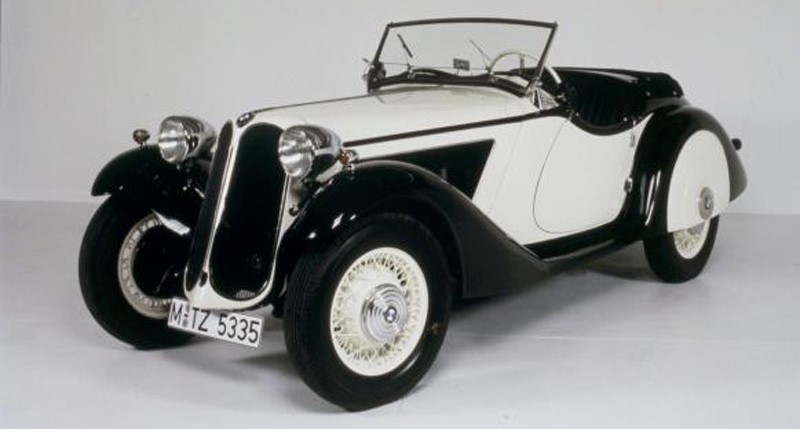
BMW 315/1
At the launch of the BMW 315 on the Berlin Motor Show in 1934 the audience and the prototype of a roadster was presented. The two-seater 315/1 made under the name of BMW in small series was 120 km/h maximum speed to the quite serious sports car of its time and was well on the race track for victories and places in front of the 1.5-liter class. Until the middle of 1935 emerged from this exclusive model only 230 copies.
General data
Construction………………………….1934 – 1935
Number produce …………………….230
Price…………………………………..RM 5.200
Specifications
Motorart……………………………….6-cylinder in-line engine
capacity in ccm………………………1490
Rated power………………………….40 PS bei 4200-4500 U / min
Maximum speed in km / h…………..125
Dimension (L/H/B) in mm…………….3900x1450x1350
Weight in kg………………………….750

BMW 315 Limousine / Saloon
Just one year after the start of production of the first BMW automobile with 6-cylinder engine, of the type 303, came as the successor to the 315 model on the market. Except for the more powerful engine the car corresponded in technology, design and features the previous model. The engine had helped by a larger cylinder capacity of 1.5 liters to now four hp more power, the BMW engineers. With its 34 horsepower, the BMW 315 was to achieve the first BMW in a position 100 km / h mark.
General data
Construction………………………….1934 – 1936
Number produce ……………………..4.882
Price……………………………………RM 3.750
Specifications
Motorart……………………………….6-cylinder in-line engine
capacity in ccm………………………1490
Rated power………………………….34 hp
Maximum speed in km / h…………..100
Dimension (L/H/B) in mm…………….3900x1500x1550
Weight in kg…………………………..835
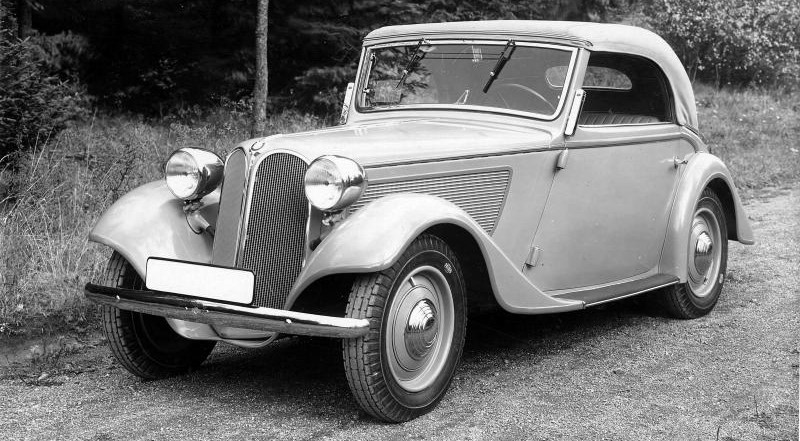
BMW 315 Convertible 2-seater (Sport Convertible) / BMW 315 Kabriolett 2-sitzig (Sport Kabriolett)
General data
Construction………………………….1934 – 1936
Number produce ……………………..13
Price……………………………………RM 4.750
Specifications
Motorart……………………………….6-cylinder in-line engine
capacity in ccm………………………1490
Rated power………………………….34 PS bei 3800 U / min
Maximum speed in km / h……………100
Dimension (L/H/B) in mm…………….3900x1500x1550
Weight in kg………………………….835

BMW 315 convertible 2-seater (Drauz Convertible)
General data
Construction………………………….1936 – 1936
Number produce ……………………..7
Price……………………………………RM 5.200
Specifications
Motorart……………………………….6-cylinder in-line engine
capacity in ccm………………………1490
Rated power………………………….34 PS bei 3800 U / min
Maximum speed in km / h……………100
Dimension (L/H/B) in mm…………….3900x1500x1550
Weight in kg………………………….835

BMW 315 Convertible 4-seater / BMW 315 Kabriolett 4-sitzig
General data
Construction………………………….1934 – 1937
Number produce ……………………..2.281
Price…………………………………..RM 4.400
Specifications
Motorart……………………………….6-cylinder in-line engine
capacity in ccm………………………1490
Rated power………………………….34 PS bei 3800 U / min
Maximum speed in km / h……………100
Dimension (L/H/B) in mm……………3900x1500x1550
Weight in kg………………………….835

BMW 315 Kabriolett-limousine / BMW 315 Convertible-Saloon
General data
Construction………………………….1934 – 1936
Number produce …………………….1.378
Price……………………………………RM 3.950
Specifications
Motorart……………………………….6-cylinder in-line engine
capacity in ccm………………………1490
Rated power………………………….34 PS bei 3800 U / min
Maximum speed in km / h……………100
Dimension (L/H/B) in mm……………3900x1500x1550
Weight in kg………………………….835
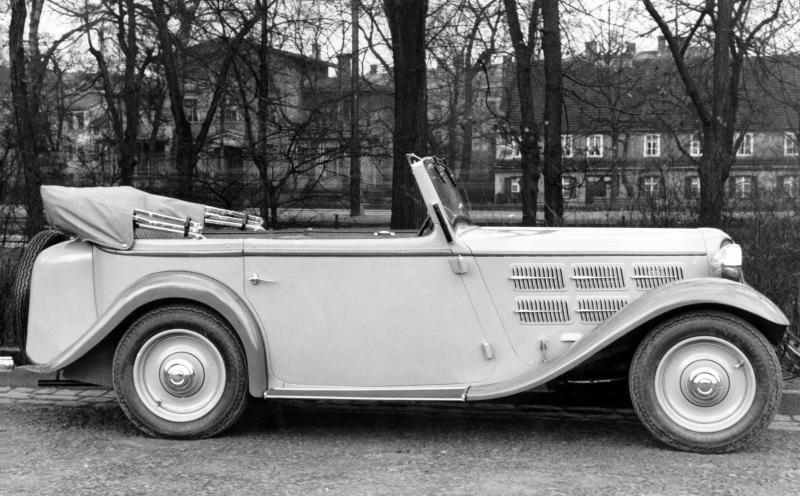
BMW 315 Tourenwagen / Tourer
General data
Construction………………………….1934 – 1936
Number produce ……………………..137
Price……………………………………RM 4.100
Specifications
Motorart……………………………….6-cylinder in-line engine
capacity in ccm………………………1490
Rated power………………………….34 PS bei 3800 U / min
Maximum speed in km / h……………100
Dimension (L/H/B) in mm……………3900x1500x1550
Weight in kg…………………………..835
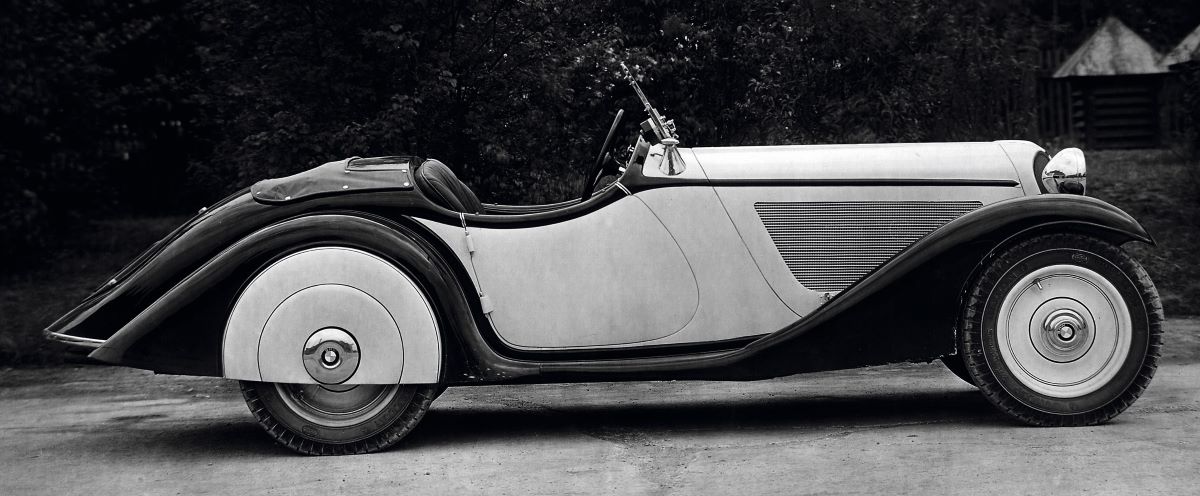
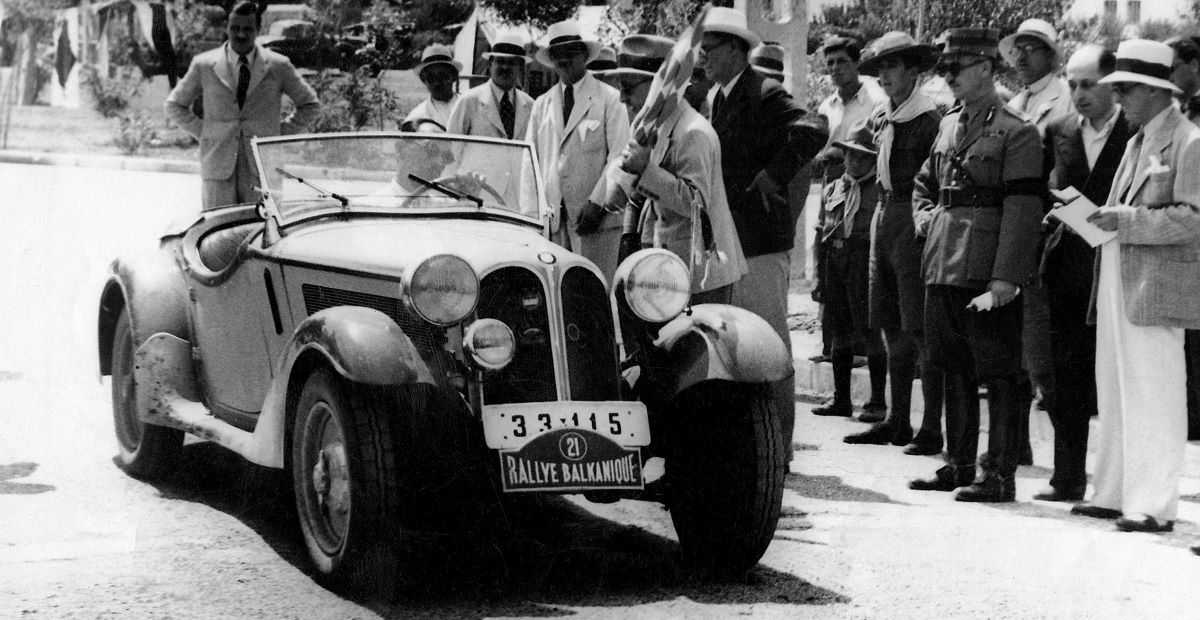
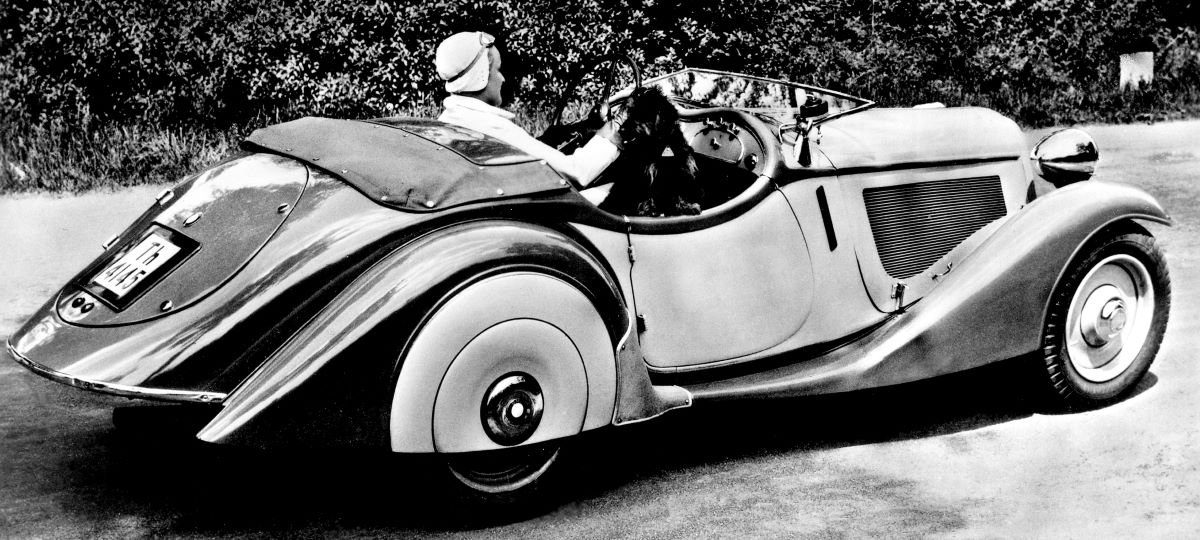
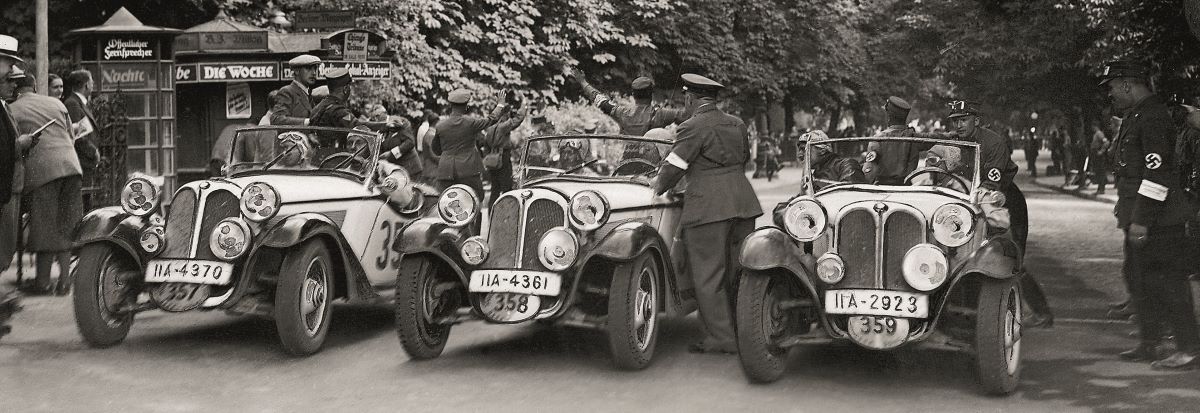
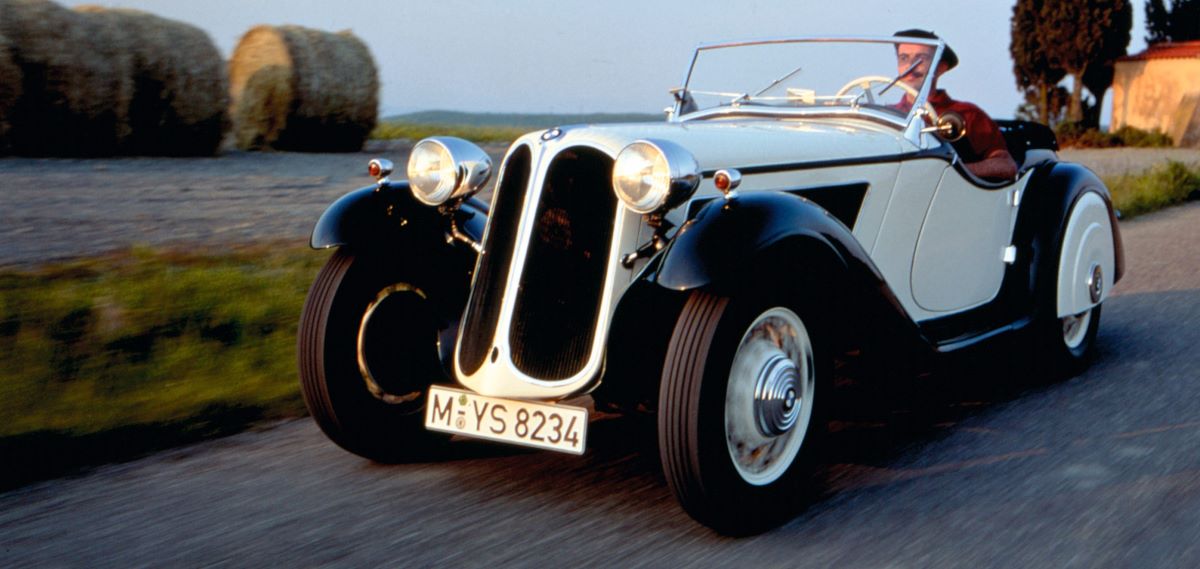
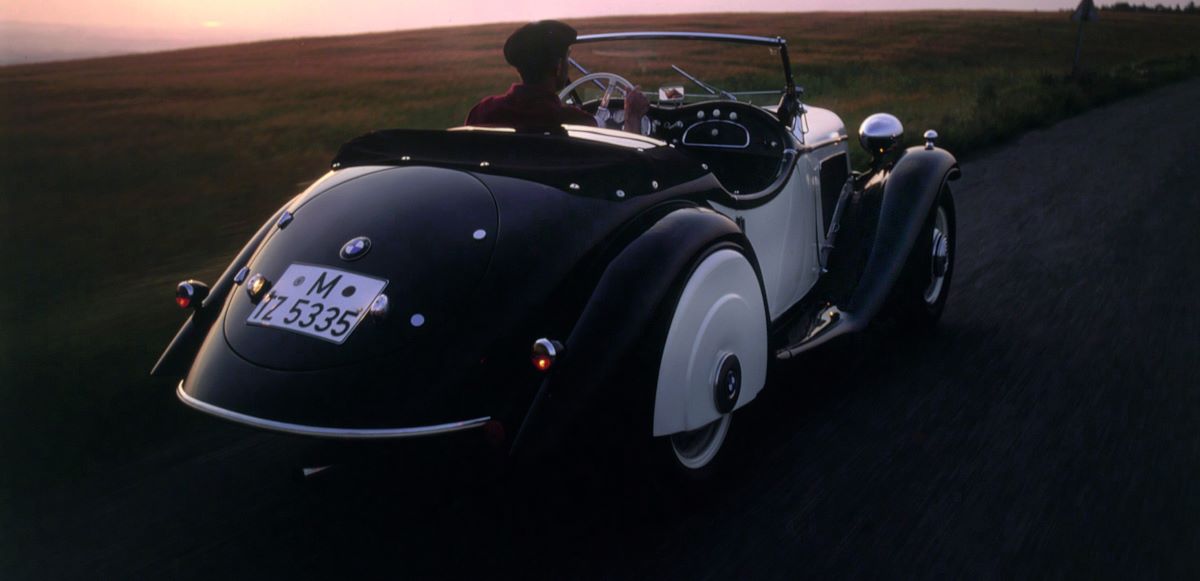

You must be logged in to post a comment.